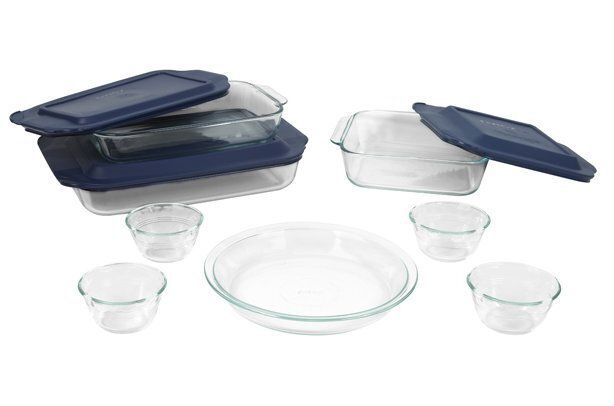
A new Consumer Reports investigation of glass bakeware had some startling findings on the hazardousness of vessels Americans use to cook every day. The magazine had received scores of letters from its readers describing cases of glass bakeware shattering after being used in a normal kitchen environment. So the ever-diligent CR decided to test bakeware from market leaders Pyrex and Anchor Hocking for shatter riskiness.
The investigators filled the bakeware with sand, heated it for for 80 minutes in a 450 degree oven, then set it down atop a wet granite countertop. They admitted that this procedure ran contrary to the manufacturers' instructions, but, except for the sand, which gets hotter than food, it doesn't seem all that different from what happens in a typical kitchen.
Consumer Reports found that, in every case, new glass bakeware bought in America shattered, spilling dangerously hot sand and dangerously sharp glass everywhere. The magazine also tested bakeware from Europe made from borosilicate, which is better at absorbing the shock of temperature gradients than soda lime glass, which has comprised American pyrex since the 1940s. (Before then, all glass bakeware was made from borosilicate.) The European borosilicate glassware did not shatter when subjected to the 450 degree test, though it did break when it was heated to 500 degrees.
The results of this test confirm a long-held suspicion that soda lime glass presents a dangerous risk of breakage. So many people are afraid of it that Pyrex has an entire section of its website devoted to setting "The Truth About Pyrex Glass" straight. But the FAQ on the Pyrex website doesn't exactly refute the idea that soda lime glass can shatter; instead, it explains that "both borosilicate and soda lime are appropriate compositions for glass bakeware, heat-strengthened soda lime is more resistant to impact breakage – the far more likely cause of consumer injury according to national emergency room data." Its site also strongly recommends using Pyrex glass in a safe way, which includes never heating the vessels too vigorously and never placing a hot vessel on a cold or wet surface.
Here's the shocking CR video: